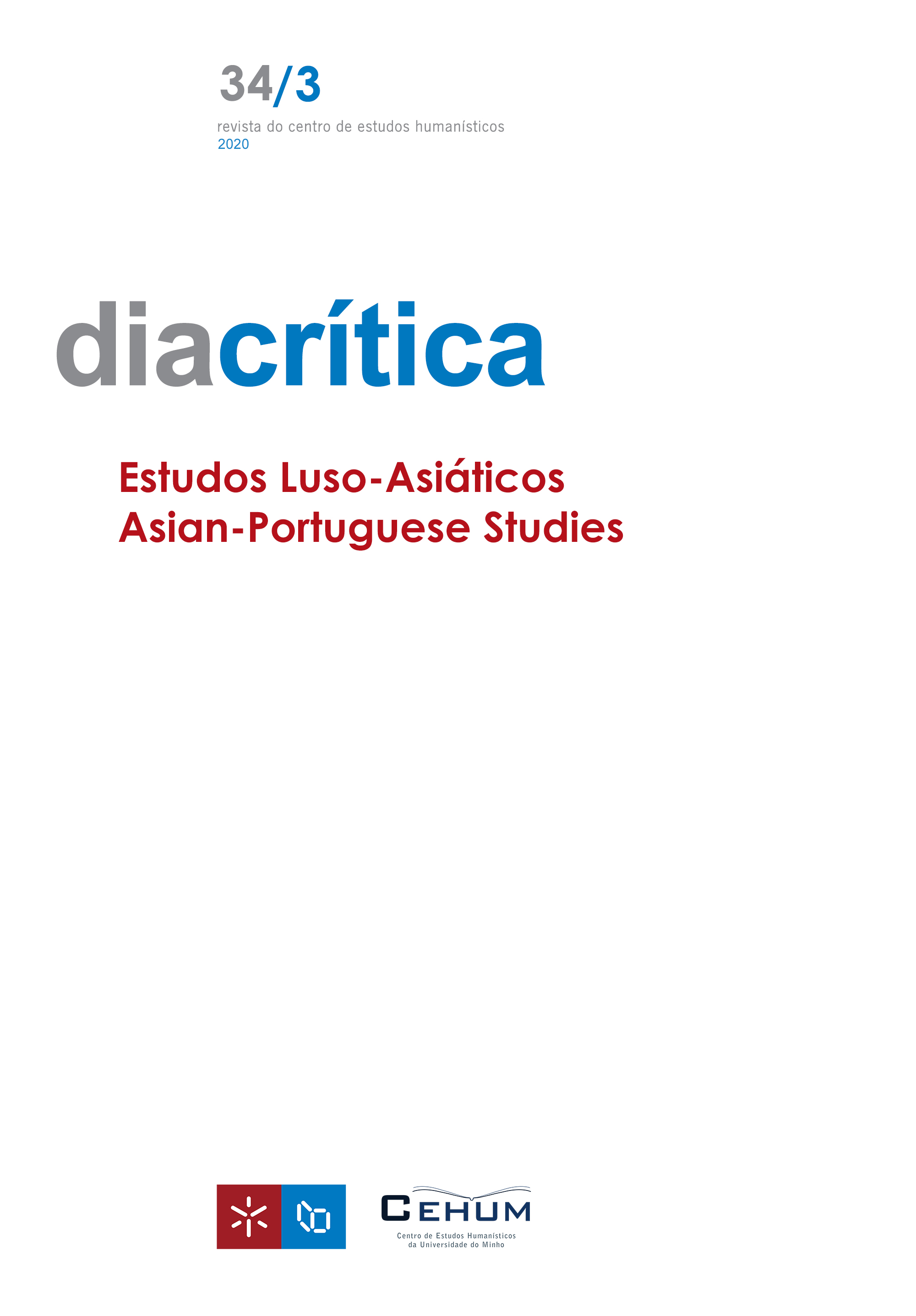Manuais para o ensino de línguas estrangeiras – Um estudo com aprendentes chineses
DOI:
https://doi.org/10.21814/diacritica.4999Palavras-chave:
Manuais didáticos, Aquisição de língua segunda, aprendentes chineses, PortuguêsResumo
De acordo com as novas teorias pedagógicas, para garantir o sucesso da aprendizagem é importante respeitar a identidade cultural dos aprendentes. Quem prepara um manual didático procura enquadrar as novas abordagens de ensino e aquisição de língua estrangeira/segunda,respeitando a identidade cultural dos alunos. Neste artigo apresentam-se resultados de um questionário apresentado a jovens chineses aprendentes de Português língua estrangeira, que estão habituados a um método tradicional de ensino com foco na gramática e tradução. Procurámos saber qual a avaliação que fazem dos manuais adotados para o ensino de português língua estrangeira. Regra geral, pode dizer-se que apesar de gostarem do método tradicional de ensino, estão bastante recetivos a novos modelos pedagógicos.
Referências
Belchior, M. J. (2011, June). Chineses aprendem mais português. Revista Macau, 23. Retrieved from http://www.revistamacau.com/2011/06/05/chineses-aprendem-mais-portugues
Blumberg, P. (2009). Developing learner-centered teaching: A practical guide for faculty. San Francisco: Jossey-Bass. DOI: https://doi.org/10.1002/j.0022-0337.2009.73.9.tb04801.x
Brown, H. D. (2001). Teaching by principles: An interactive approach to language pedagogy. New York: Longman. Brumfit, C. J. (1980). Seven last slogans. Modern English Teacher, 7(1), 30–31. Celce-Murcia, M., & Larsen-Freeman, D. (1999). The grammar book: An ESL/EFL teacher’s course (2nd ed.). Boston: Heinle and Heinle.
Chang, S.C. (2011). A contrastive study of grammar translation method and communicative approach in teaching English grammar. English Language Teaching, 4(2), 13–24. https://doi.org/10.5539/elt.v4n2p13 Cheong, E., & Wong, S. (2017). How Portuguese skills benefit UM graduates` career development. Umagazine, 16, 20–25. Cunningsworth, A. (1995). Choosing your Coursebook. Oxford: Macmillan Heineman. DOI: https://doi.org/10.5539/elt.v4n2p13
Finocchiaro, M., & Brumfit, C. (1983). The functional-notional approach: From theory to practice. New York: Oxford University Press.
Haycroft, J. (1998). An introduction to English language teaching. London: Longman.
Hird, B. (1995). Teaching English communicatively in China – Educating teachers is not enough. Australian Journal of Teacher Education, 20(2), 1–4. https://doi.org/10.14221/ ajte.1995v20n2.1 DOI: https://doi.org/10.14221/ajte.1995v20n2.1
Hu, G. (2002). Potential cultural resistance to pedagogical imports: The case of communicative language teaching in China. Language, Culture and Curriculum, 15(2), 93–105. https://doi.org/10.1080/07908310208666636 DOI: https://doi.org/10.1080/07908310208666636
Kumaravadivelu, B. (1994). The postmethod condition: (E)merging strategies for second/foreign language teaching. TESOL Quarterly, 28(1), 27–47. DOI: https://doi.org/10.2307/3587197
Kumaravadivelu, B. (2003). Problematizing cultural stereotypes in TESOL. TESOL Quarterly, 37(4), 709–719. DOI: https://doi.org/10.2307/3588219
Kumaravadivelu, B. (2006). Tesol Methods: Changing tracks, challenging trends. Tesol Quarterly, 40(1), 59–81. DOI: https://doi.org/10.2307/40264511
Larsen-Freeman, D. (1997). Chaos/complexity science and second language acquisition. Applied Linguistics 18(2), 141–65. DOI: https://doi.org/10.1093/applin/18.2.141
Larsen-Freeman, D. (2000). Techniques and principles in language teaching. Oxford: Oxford University Press.
Littlewood, W. (2013). Developing a context-sensitive pedagogy for communication-oriented language teaching. English Teaching, 68(3), 3–25. https://doi.org/10.15858/ engtea.68.3.201309.3 DOI: https://doi.org/10.15858/engtea.68.3.201309.3
Maley, A. (2013). Vocabulary. In B. Tomlinson (Ed.), Applied linguistics and materials development. London: Bloomsbury.
McDonough, J., Shaw, C., & Masuhara, H. (2013). Materials and methods in ELT: A teacher’s guide. (3.ª ed.). Maine: Wiley-Blackwell.
McGrath, I. (2002). Materials evaluation and design for language teaching. Edinburgh: Edinburgh University Press.
Nunan, D. (1991). Communicative task and language curriculum. TESOL Quarterly, 25(2), 279–295. https://doi.org/10.2307/3587464 DOI: https://doi.org/10.2307/3587464
Nunan, D. (1999). Second language teaching and learning. Boston: Heinle and Heinle.
Richards, J. C., & Rodgers, T. S. (2001). Approaches and methods in language teaching. Cambridge: Cambridge University Press. DOI: https://doi.org/10.1017/CBO9780511667305
Sheldon, L. E. (1987). Introduction. In L. E. Sheldon (Coord.), ELT textbooks and materials: Problems in evaluation and development. ELT Documents, 126. London: Modern English Publications/ The British Council.
Sheldon, L. E. (1988). Evaluating ELT textbooks and materials. ELT Journal, 42(4), 237–246. https://doi.org/10.1093/elt/42.4.237 DOI: https://doi.org/10.1093/elt/42.4.237
Swan, M. (1985). A critical look at the communicative approach (1). ELT Journal, 39(1), 2–12. https://doi.org/10.1093/elt/39.1.2 DOI: https://doi.org/10.1093/elt/39.1.2
Thompson, G. (1996). Some misconceptions about communicative language teaching. ELT Journal, 50(1), 9–15. https://doi.org/10.1093/elt/50.1.9 DOI: https://doi.org/10.1093/elt/50.1.9
Tomlinson, B. (2010). Language acquisition and language learning materials. In B. Tomlinson (Ed.), English language learning materials: A critical review. London: Continuum International Publishing Group.
Tomlinson, B. (2013). Introduction: Applied linguistics and materials development. In B. Tomlinson (Ed.), Applied linguistics and materials development. London: Bloomsbury. DOI: https://doi.org/10.1002/9781405198431.wbeal0749
Tsui, A. B. M. (2007). Complexities of identity formation: A narrative inquiry of an EFL teacher. TESOL Quarterly, 41(4), 657–680. https://doi.org/10.1002/j.1545-7249.2007.tb00098.x DOI: https://doi.org/10.1002/j.1545-7249.2007.tb00098.x
Weimer, M. (2002). Learner-centered teaching. San Francisco: Jossey Bass.
Downloads
Publicado
Como Citar
Edição
Secção
Licença
Direitos de Autor (c) 2023 Ana Margarida Belém Nunes, Maria Isabel Matos

Este trabalho encontra-se publicado com a Creative Commons Atribuição-NãoComercial 4.0.










